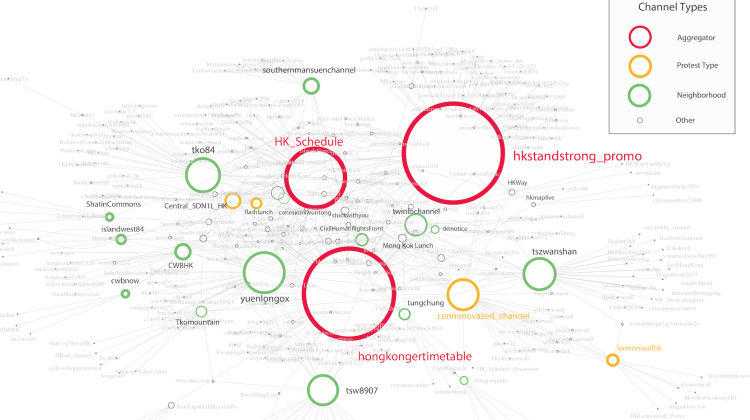Assessing the Impact of Social Media and State Surveillance on Urban Protests
Image

Network analysis demonstrating the connections between Telegram channels, particularly those focused on advertising events. They are categorized according to their role as “aggregator” channels, neighborhood-specific channels, and protest-type specific channels. Size of circles corresponds to number of links to that channel (degree), while lines indicate a relationship (a link to a channel) between one channel and another. Credit: Andrew Stokols


